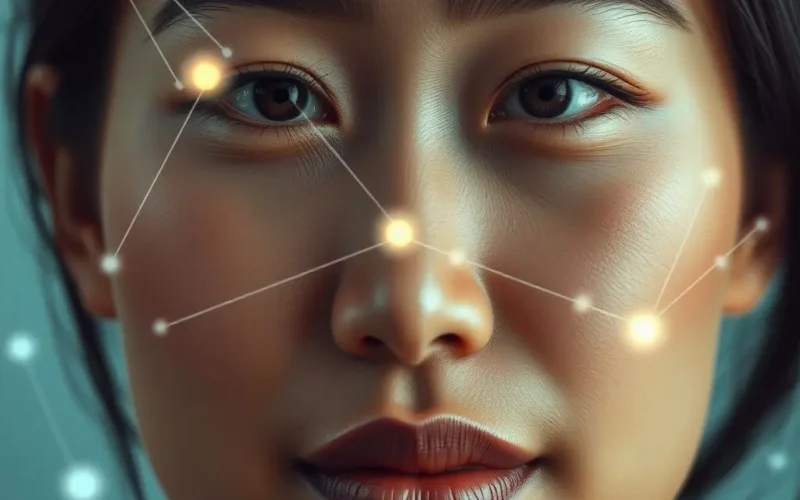Ever feel like your face has a mind of its own, silently broadcasting your mood? Turns out, it just might. And now, artificial intelligence is seriously getting into the business of tuning into that silent broadcast.
Forget simple smile detectors. We’re talking about sophisticated algorithms diving deep, analyzing the blink-and-you’ll-miss-it muscle twitches, the subtle arch of an eyebrow, or the barely perceptible tightening around the lips. This isn’t just about tagging ‘happy’ or ‘sad’. This tech is aiming to sense a much richer spectrum of human feeling: frustration, confusion, deep engagement, surprise, even boredom – all in real-time, just by watching you.
It sounds like something straight out of a near-future movie, doesn’t it? But this capability is rapidly moving from the lab into the real world, sparking fascinating possibilities and, naturally, some significant questions.
To give you a quick visual glimpse into this intriguing frontier, check out this short video we put together:
Pretty wild, right? The idea that a machine could potentially understand our inner state just by observing external cues opens up a whole new chapter in human-computer interaction and beyond.
Table of Contents
How Does AI Begin to Understand a Feeling Face?
Decoding human emotion is incredibly complex, even for other humans. We rely on context, tone of voice, body language, and, yes, facial expressions. For AI, it primarily comes down to pattern recognition on a massive scale.
The Science of Facial Expressions
At the heart of this technology is research dating back decades, particularly the work on the Facial Action Coding System (FACS). Developed by psychologists Paul Ekman and Wallace Friesen, FACS identifies distinct ‘Action Units’ (AUs) – the minimal movements of facial muscles that change facial appearance. Think of AUs as the building blocks of expressions. For example, AU 1 is ‘Inner Brow Raiser’, AU 12 is ‘Lip Corner Puller’ (a smile), and AU 15 is ‘Lip Corner Depressor’ (sadness).
While Ekman’s foundational work focused on identifying a set of ‘basic’ universal emotions (like joy, sadness, anger, fear, surprise, disgust), modern research acknowledges that emotions are far more nuanced and culturally influenced.
AI Learning to See AUs (and More)
AI models, specifically those leveraging deep learning and neural networks, are trained on enormous datasets of images and videos of faces expressing various emotions or reacting to stimuli. The algorithms learn to identify the patterns of these Action Units, often combined with other visual cues like head pose, gaze direction, and even subtle changes in skin texture or color (though this is more experimental).
Instead of being explicitly programmed with rules like ‘AU 12 means happy’, the AI learns to associate complex combinations and sequences of AUs with specific emotional states or intensities based on the labeled data it consumes. It’s like teaching a child what different expressions mean by showing them countless examples.
Some advanced systems also go beyond just identifying static AUs. They analyze the temporal dynamics – how expressions change over time, the speed of onset, the duration, and the offset of movements – which provides critical context missing in static images.

Where is Emotion Recognition AI Making Waves?
The potential applications for AI that can sense emotion are vast and continue to grow. Here are a few areas where this technology is already being explored or implemented:
Marketing and Advertising
Imagine testing an ad or a movie trailer and understanding precisely how viewers react, moment by moment, based on their facial expressions. Emotion AI can analyze audience engagement, pinpoint confusing or boring sections, or identify moments that evoke strong positive or negative feelings. This provides incredibly granular feedback beyond traditional focus groups or surveys.
Customer Service and Sales
Call centers or virtual assistants could potentially detect a customer’s rising frustration before it escalates, allowing agents to adapt their approach. In retail or online interactions, AI could theoretically gauge a user’s interest or confusion, personalizing the experience in real-time.
Education and E-learning
Online learning platforms could use emotion AI to monitor student engagement or confusion. If the AI detects signs of boredom or misunderstanding on a student’s face, the system could potentially pause, offer a different explanation, or adjust the pace of the lesson. This aims to create a more responsive and personalized learning environment.

Mental Health and Well-being
This is a sensitive but potentially impactful area. AI could assist therapists or healthcare professionals by identifying subtle, persistent emotional cues that might be indicative of certain conditions like depression or anxiety, especially in individuals who struggle to articulate their feelings. It’s important to note this would likely be used as a supplementary tool, not a diagnostic replacement.
Automotive
In cars, AI could monitor driver fatigue or distraction by analyzing facial cues, potentially triggering alerts to improve safety.
It’s Not Without Its Challenges and Controversies
While the possibilities are exciting, emotion recognition AI is far from a perfect or universally accepted technology.
Accuracy and Generalization
Human emotions are expressed differently across cultures and even between individuals. AI models trained on data from one demographic may not perform accurately when analyzing faces from another. Furthermore, context is crucial – a surprised face at a party is different from a surprised face reacting to bad news. AI often struggles with this lack of contextual understanding.
Static images versus real-time video also presents a challenge. While static images can show peak expressions, the dynamics of how an expression forms and fades provide vital information that is harder to capture from a single frame.
Privacy and Ethics
Perhaps the biggest hurdle is the privacy implication. Our faces are constantly visible in public and increasingly online. The idea of machines automatically scanning and interpreting our innermost states raises significant concerns about surveillance, consent, and how this sensitive data is collected, stored, and used.
Who owns the data derived from your face? How is it protected from misuse? Could this technology be used to discriminate or manipulate? These are critical ethical questions that need robust answers and regulations.

The Definition of ‘Emotion’
Even scientists don’t fully agree on what constitutes an ’emotion’ and how it’s manifested externally. Is a furrowed brow always frustration, or could it be intense concentration? AI is inferring states based on external signals, which may not always align with a person’s true internal feeling.
Looking Towards the Horizon
Despite the challenges, research and development in this field continue at a rapid pace. Future systems may integrate multiple data streams – facial analysis combined with voice tone analysis, body language tracking, and even physiological data (like heart rate, if available) – to build a more comprehensive picture of a person’s state.
The key to the responsible development and deployment of this technology lies in transparency, strong ethical guidelines, and robust privacy protections. As AI gets better at ‘seeing’ our feelings, we as a society must decide how we want this powerful capability to be used.
Frequently Asked Questions
Q: Can AI *really* know how I feel inside?
A: AI analyzes external cues (like facial muscle movements) and patterns learned from data to *infer* or *predict* an emotional state. It doesn’t directly access your internal feelings. Accuracy varies and is highly dependent on the AI model, the quality of the data, and the context.
Q: Is this technology being used on me without my knowledge?
A: This is a significant concern. While there are legitimate research and application areas (often with consent), the potential for covert surveillance exists. Regulations are being developed in various regions to address this, but it’s an ongoing challenge.
Q: Are certain emotions easier for AI to detect than others?
A: Generally, expressions associated with basic emotions (like a strong smile for happiness or a frown for sadness) that have clear, universal Action Unit patterns are often easier for AI to identify compared to more complex or subtle emotions like confusion, contemplation, or embarrassment, which rely more heavily on context and nuanced cues.
Q: Does this technology work well across different cultures?
A: This is a major limitation. Emotional expression can vary significantly across cultures. AI models trained predominantly on data from one cultural group often perform poorly when analyzing expressions from another. Addressing this requires diverse and representative training datasets.
Q: How is this different from basic facial recognition?
A: Facial recognition focuses on identifying *who* you are (matching your face to an identity in a database). Emotion recognition focuses on analyzing the dynamic patterns of your facial features to infer *how you might be feeling*.
Where This Journey Takes Us Next
The path forward for AI that can read emotions is a blend of remarkable technological advancement and crucial societal deliberation. It holds the promise of creating more intuitive and responsive technology, potentially improving everything from education to healthcare. Yet, the power to peer into our potential emotional states demands extreme caution and robust safeguards to protect our privacy and prevent misuse.
So, as you navigate the digital world and beyond, be mindful that your face might just be sharing more than you think. The conversation about AI and emotion is just beginning, and how we shape its future is something we all need to consider.





